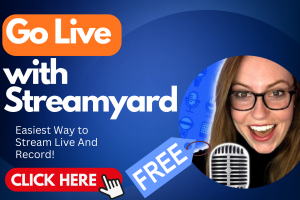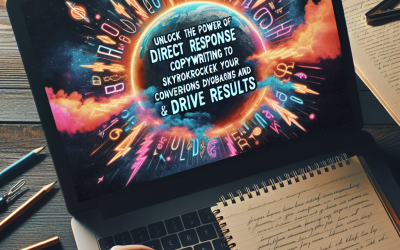Mastering Lead Generation Copywriting: Proven Techniques to Turn Readers into Loyal Customers
In my experience with lead generation copywriting, I’ve learned that the way I craft my messages can make or break my ability to attract and convert leads. I’ve been researching this field extensively, and I want to share what I’ve discovered about turning casual readers into loyal customers through effective lead generation copywriting. From what I’ve found, the core principles remain consistent: clarity, persuasion, and a deep understanding of my audience.
Throughout my journey, I’ve realized that mastering lead generation copywriting is both an art and a science. I’ve tested various techniques, analyzed results, and refined my approach. I believe that by implementing proven strategies, you can significantly improve your ability to generate qualified leads. I want to guide you through some of these techniques, grounded in my personal experience, so you can turn your content into a powerful lead-generation tool.
Understanding the Power of Lead Generation Copywriting
What Is Lead Generation Copywriting?
In my experience, lead generation copywriting refers to the strategic writing techniques used to attract potential customers and guide them toward taking a specific action—such as signing up for a newsletter, downloading a resource, or making a purchase. I’ve discovered that effective lead generation copywriting combines compelling language with psychological triggers to motivate readers. It’s about creating content that resonates deeply and compels action.
From what I’ve learned, the essence of lead generation copywriting is not just about selling but about building trust and providing value upfront. I recommend focusing on understanding your audience’s pain points and desires so your copy can speak directly to their needs. This approach has helped me craft messages that consistently convert readers into loyal followers or customers.
The Role of Psychology in Lead Generation Copywriting
I’ve found that tapping into psychology is crucial when mastering lead generation copywriting. Using principles like scarcity, social proof, and reciprocity can significantly boost conversion rates. I recommend studying these psychological triggers and integrating them naturally into your copy.
In my experience, the most successful strategies involve understanding what motivates your audience and addressing those motivations honestly. For example, I’ve used testimonials and case studies to build social proof, which reassures potential leads. I believe that understanding human behavior is the secret sauce behind high-performing lead generation copy.
Crafting Irresistible Headlines and Hooks
Creating Attention-Grabbing Headlines
One of the first lessons I’ve learned is that your headline is the gatekeeper of your content. In my experience, a compelling headline can dramatically increase your click-through rates. I recommend making headlines clear, benefit-driven, and curiosity-provoking. For example, instead of saying “Learn About Our Services,” I prefer “Discover How to Generate More Leads in Just 10 Minutes.”
From what I’ve seen, including keywords like lead generation copywriting naturally in your headlines improves SEO performance and attracts the right audience. I always test different headline formulas—such as how-to guides, numbered lists, or questions—to see which resonates most with my target market.
Effective Hooks to Keep Readers Engaged
In my experience, the first few sentences of your copy are critical to hook your reader. I’ve discovered that storytelling or posing a provocative question works well. I recommend starting with a relatable problem or a bold statement to immediately grab attention.
When I craft lead generation copywriting, I focus on making my hooks relevant and emotionally compelling. For instance, sharing a quick personal anecdote related to lead generation struggles often encourages readers to continue reading. This approach helps me build a connection from the very start.
Writing Persuasive Calls to Action
Designing Clear and Compelling CTAs
I’ve found that a strong call to action (CTA) can be the difference between a bounce and a conversion. I recommend making your CTA straightforward, action-oriented, and aligned with your audience’s needs. For example, instead of vague phrases like “Submit,” I use “Get My Free Guide Now.”
From my research, placing CTAs strategically—such as at the end of a compelling story or after highlighting the benefits—is essential. I always test different phrasing and button designs to see what converts best, and I believe that consistency and clarity are key in lead generation copywriting.
Using Urgency and Scarcity
In my experience, creating a sense of urgency can significantly improve conversions. Phrases like “Limited Time Offer” or “Only a Few Spots Left” encourage readers to act quickly. I recommend incorporating scarcity subtly so it doesn’t feel pushy.
From what I’ve learned, pairing urgency with a clear benefit makes your lead generation copywriting> more effective. I often include countdown timers or exclusive bonuses to motivate immediate action, which has consistently increased my conversion rates.
Using Storytelling to Boost Engagement in Lead Generation Copywriting
The Power of Personal Stories
I’ve discovered that storytelling humanizes your brand and makes your lead generation copywriting> more relatable. Sharing my own experiences with lead generation challenges has helped me connect emotionally with my audience. I recommend weaving stories into your copy to illustrate how your solution can resolve real problems.
In my personal approach, I use storytelling to demonstrate the transformation your product or service provides. This not only builds trust but also motivates readers to take the next step. I believe that stories are one of the most powerful tools in a copywriter’s arsenal for .
Case Studies and Testimonials
From my research, including case studies and testimonials in your lead generation copywriting> adds credibility and social proof. I recommend highlighting real results achieved by your clients, which helps potential leads envision their own success.
In my experience, authentic stories from satisfied customers tend to convert better than generic claims. I always aim to showcase genuine examples, which I believe is essential in building trust and nudging prospects toward conversion.
Optimizing for Conversions: Tips and Strategies
Segmentation and Personalization
I’ve found that segmenting my audience and personalizing my lead generation copywriting> messages makes a huge difference. When I tailor content to specific demographics or interests, I notice higher engagement and conversion rates. I recommend investing time in understanding your audience segments and customizing your copy accordingly.
From what I’ve learned, personalized emails, landing pages, and offers resonate more deeply. I believe that the more relevant your message, the higher the likelihood of turning readers into loyal customers.
Testing and Analytics
I recommend constantly testing different versions of your copy—A/B testing headlines, CTAs, and layouts—to identify what works best. In my experience, tracking metrics like click-through rates and conversions provides valuable insights that help me refine my lead generation copywriting> strategies.
I believe that data-driven decisions are essential for continuous improvement. By analyzing performance, I can tweak my copy to maximize results and better serve my audience’s needs.
References and Resources
Throughout my research on lead generation copywriting
, I’ve found these resources incredibly valuable. I recommend checking them out for additional insights:
Authoritative Sources on
-
Moz’s Guide to Lead Generation Strategies
moz.comThis resource offers detailed tactics on optimizing lead generation copywriting
-
HubSpot’s Lead Generation Playbook
hubspot.comProvides actionable tips on creating compelling lead generation copywriting
-
Copyblogger’s Guide to Persuasive Copy
copyblogger.comFocuses on crafting persuasive copy that converts leads into customers effectively
-
Neil Patel’s Lead Generation Tips
neilpatel.comOffers advanced insights into combining lead generation copywriting and digital marketing
-
Google Ads Lead Form Best Practices
google.comGuides on optimizing lead capture forms for maximum conversions in lead generation copywriting
-
LinkedIn Expert Tips on Lead Generation
linkedin.comReal-world advice from industry leaders on improving your lead generation copywriting
-
Content Marketing Institute’s Strategies
contentmarketinginstitute.comFocuses on integrating content marketing with lead generation copywriting
Frequently Asked Questions
How can I improve my lead generation copywriting skills?
I recommend studying successful campaigns, analyzing what works, and constantly testing different techniques. From my experience, refining your headlines, CTAs, and storytelling methods can significantly boost your results. Additionally, reading authoritative resources on lead generation copywriting
helps stay updated with best practices.
What role does SEO play in lead generation copywriting?
In my view, SEO is vital because it ensures your content reaches the right audience. Incorporating relevant keywords naturally, like lead generation copywriting
, helps improve visibility and attract organic traffic. I always optimize my copy for both search engines and human readers to maximize conversions.
Can lead generation copywriting> be learned, or is it innate?
I believe that lead generation copywriting> is a skill that can be learned with practice and study. From my experience, understanding human psychology, practicing writing regularly, and analyzing successful campaigns all contribute to becoming proficient. It’s a continuous learning process, and I recommend staying curious and open to new techniques.
Conclusion
In conclusion, my research on lead generation copywriting
has shown that mastering this skill involves understanding your audience, crafting compelling headlines and CTAs, and leveraging storytelling and psychological triggers. I hope this guide helps you develop your own lead generation copywriting
techniques effectively. Based on my experience, consistently refining these strategies will lead to higher conversions and long-term customer loyalty. Remember, the key to success lies in ongoing learning and testing—so keep experimenting and optimizing your approach.
Find out more information about “lead generation copywriting”
Search for more resources and information:








